#a Graphic Designer with many years of experience. The main goal of my designs is to improve the appearance and credibility of your business
Text
[Review] Air Twister (ATV)

A strange hybrid.
Another Apple Arcade title that caught my eye was this rail shooter. It seems to mash up two Sega classics: Space Harrier (flying person with a gun) and Panzer Dragoon (the lock-on shooting mechanic). Directed by Yu Suzuki through his company Ys Net, otherwise known for Shenmue 3, it certainly has that Sega pedigree! (He also directed the original Space Harrier you see, although he wasn't involved with Panzer Dragoon.)
The game kind of throws you in initially, so you might think it's a simple arcadey experience. Only after failing your first run does it reveal its broader scope (although the game itself doesn't shy away from oddly quoting Suzuki himself saying that the arcade mode is the real game and everything else is just extra). By defeating enemies in the main mode you gradually accumulate stars which unlock nodes in an "Adventure" map. These give you all sorts of things: extra max health, new weapons, charges for a slowdown ability, new cosmetic gear, etc.

This is how Air Twister artificially encourages a player to do extra runs of the main game's 12 stages, although I had fun trying out the different weapons by retackling the short campaign. Also unlockable are new modes of play, only most of them seem especially superfluous, not to mention expensive in stars since you only unlock individual stages at a time for these modes.
As for the game itself, it's pretty decent. Rail shooters like this often have trouble effectively depicting the depth of incoming projectiles to help the player avoid them, and this one certainly has that problem. As someone who grew up on Lylat Wars the enemy placements and formations seem a bit standard as well, and the basic combat lacks that visceral impact. The graphics have quite good fidelity but this seems to have come at the cost of model and texture pop-in, as well as occasional frame stuttering, which you really don't want with an action game like this.

Promotion for the game boasts of its touch and swipe controls, which I didn't test at all. I just used a controller for a more traditional experience, which the upcoming console port would seem to confirm is going to win out as the default scheme. Perhaps as a consequence of designing around direct touch control, there is no crosshair to help out controller players which makes lining up your lock-ons more difficult... or maybe that's part of its Space Harrier legacy, which also lacked this feature. Planet Harriers had a crosshair, pout pout.
An interesting feature of this game is that it represents a collaboration with Dutch music artist Valensia. His heavily Queen-inspired prog rock songs (a mix of old hits and newly composed tracks for this game) grant a very novel "rock opera" feel to the game experience. I don't tend to like lyrical songs in my video games, and they didn't really try to time the action to the music, but even so it's pretty cool to prominently feature this kind of music in a game.

Like many Apple Arcade games, this has the uncomfortable feel of hybridisation between console and mobile game design. It has daily and weekly goals, premium currencies, and even the dreaded timed events. The latter ran for just a month at a time last year (three in total) and their exclusive cosmetics are now inaccessible. I loathe this practice, and they seem to have stopped it, presumably while focusing on the console port. The app icon still hasn't even been changed away from a seasonal event which has been over for eight months. Baffling.
As it is, the odd compromises and decisions in the design of this game would probably destine this for footnote status in the Space Harrier legacy alongside Planet Harriers. Hopefully the console port tightens its focus and gets it more attention, because there's some nice stuff here. I didn't even mention the bizarre lore compendium or the cool environments which again hybridise the surrealist Space Harrier worlds with Panzer Dragoon's more grounded epic fantasy vibes, leading to some imaginative dreamy landscapes.
8 notes
·
View notes
Text
Radical Proposal
Amandeep Singh
[email protected]
Title: Listen If You Dare
Software, Material, and Technical Needs:
For creating the visuals that will be projected, I’m planning on using After Effects for motion graphics and editing all of the visuals together. For making my own visuals I’ll use ProCreate and Photoshop, and for creating soundscapes and mixing sound I will use Pro Tools. All of this software is available to me, either in the labs or through my personal licenses. I am also planning on using software for projection mapping, which I need to acquire.
Installing the piece would require a few materials. This includes a projector for displaying the visuals. I will also need a surface similar to a tri-fold board to project the visuals onto, as well as a computer to run the visuals and the The audio will be played through headphones, and the headphones will be placed on a stand in front of the board.
Mediums:
Motion graphics, found footage, digital art, collage, and projection.
Installation:
The film will be a combination of anxious imagery projected onto a tri-fold type board and calming audio that will be played through headphones worn by one audience member at a time. As the projector displays the film, the audience member will walk up to the headphones, which will cast the shadow of the person onto the board. The headphones on the stand in front of them will be put on and play calming sounds, the opposite experience of the imagery displayed in front of them.
Aesthetic:
The visuals that will be projected are meant to make the audience nervous, but by using visuals that I personally get anxious from. I will stay away from using disturbing visuals with violent themes and stay away from common phobias such as arachnophobia, claustrophobia, trypophobia, etc. The tri-fold board is meant to make the audience feel like they’re stepping into a space but not feel trapped. The main goal is to make the audience feel uncomfortable through the visuals and an unsettling sound track, and have a feeling of uncertainty before putting on the headphones in front of them, only to realize that the audio is relaxing, giving the feeling that everything is alright.
Themes:
Nostalgia, anxiety, uncertainty, and relief.
Proposal:
Something that really interests me about art, especially art that is installed in a physical way, is when it’s interactive and the audience can choose to interact with it. Taking this a step further, I really wanted to see how far I could push this “choice” and give the audience a feeling of uncertainty before making the choice to engage with the piece. There isn’t much to the actual “piece,” it’s more about just the choice of engaging. I thought this would be best executed by repelling the audience away from the installation by projecting imagery that causes some level of anxiety. The visuals would be projected in a sequence where the visuals morph into the next sequence to make one film that will be looped, and will be played along with an unsettling sound track.
Everyone is different and I wouldn’t be able to cover everything that causes anxiety, so I decided to use imagery that makes me nervous. This includes analog horror, unsettling synthy audio, as well as a feeling of nostalgia. This weird feeling of anxiety caused by nostalgia would be displayed using images related to spaces that were a part of my very early years. Many others seem to feel the same kind of nervousness when seeing similar imagery such as liminal spaces, which I will utilize in the projection design. My goal is that the imagery I use is unsettling, but inviting for those who are curious for more.
As for the “reveal” that is only experienced by the audience members who decide to make the “choice” of engaging despite the unsettling visuals, there will be a set of headphones in front of the installation, which will play audio that is very calming and reassuring the audience that everything is alright and not to worry about the visuals playing in front of them. This will be a combination of soothing sounds such as ocean waves and spoken dialog that has a touch of humor. I have a lot of trouble making scary decisions, and although not all of the decisions have a good ending, I want to simulate the calming feeling I get when I finally make a big decision.
Moodboards:



Thumbnails:


0 notes
Text







Guerilla Advocacy Campaign Project
Plastic pollution is one of the main causes of marine species extinction, health problems for human beings and animals alike, and the destruction of our ecosystems. Between 8 and 10 million tons of plastic end up in the ocean every year, and plastic makes up 80% of all marine debris found from surface waters to deep-sea sediments. While plastic products need to be eradicated entirely in order to truly resolve the issue, the best impact we can have is through plastic pollution cleanup until those in power realize its detrimental effects.
The campaign Bombastic Plastic is an ocean cleanup organization designed to fund and organize groups to remove plastics from local waterways and the ocean. Our mission is to clean the oceans of current plastics large enough to recover and to educate people on the present issue of plastic pollution and the accompanying microplastic complications. An individual may get involved with the organization by visiting our website www.bombasticplastic.org or by calling our support team at 1-800-H2OHOPE.
Plastic pollution is in need of advocacy as this is a widespread issue that has an effect on everyone and everything. The ocean is an ecosystem that covers roughly 70% of the Earth, 97% of the Earth’s water supply is stored in our oceans, and 70% of the oxygen we breathe is generated by marine plants. Yet, we do not take care to preserve its ecosystem. The ocean and human life share a two-way relationship, the ocean is vital to the health of humans, and we are vital to the health of the ocean.
The issue is described through the presentation of many facts and statistics relevant to plastic pollution and its effect on the ocean’s ecosystem and human beings. This leads into the discussion of why it’s actually an important matter and a set of suggestions for how we can improve the immense plastic pollution of the ocean. There are many areas where an individual can reduce their plastic use, and this organization helps guide people towards better ocean-friendly habits. The primary goal of Bombastic Plastic is to orchestrate cleanup groups in order to reduce the plastic that is already present within our oceans. This campaign advocates for individuals to reduce their plastic consumption as well as to participate in or organize their own local cleanups when our organization does not have a nearby cleanup group previously organized.
To demonstrate the great presence of plastic, I created graphics displaying natural ocean creatures amongst similar creatures made of plastic to resemble to the real wildlife. I felt that this comparative relationship is an effective demonstration of the rising plastic presence within the seas and a need for advocacy for this issue. I feel that I created the iconography well and with a proper level of detail for the mission. To keep a consistent feeling throughout the campaign, I utilized a uniform set of colors and fonts. Across all of my advocacy components the title’s font and the background color scheme remained the same, with varying iconography and text depending on its purpose.
I enjoyed this process as a creator, it was very beneficial for improving my knowledge and skills within each of Adobe’s different programs for graphic design. I find myself growing in my skillset and progressing as a graphic artist as I research and experiment with different artistic elements within the software. I began the process by designing the campaign’s logo and choosing the fonts that fit best with the art. I took the design decisions that I made in the logo and implemented them in my poster and brochure, making adjustments and adding detail throughout the process. Once I was satisfied with the logo’s appearance and I had completed the campaign poster and brochure, I made mockups of different items for branding.
I feel as though I was successful in effectively designing this campaign, it is very cohesive and neatly composed. I was able to implement all the design factors I had imagined for this organization and its iconography. I am proud of the Bombastic Plastic campaign collection as a whole, but I am most pleased with the iconography. I was able to bring my vision to life even with my limited Adobe experience through the continuous learning of new software skills and improving on those I had already learned thus far. As I utilize the software more, I become more comfortable with the tools and am able to continue to improve and produce better designs.
0 notes
Text
Resident Evil 4 (HD re-release 2014)

Platform played on: PS5
Being in my late 20's and only just finding the time to play through Resident Evil in it's entirety is bizarre. Being a lover of the survival horror genre (let's be honest, the horror genre in general) this was just one game that I had always heard to much about, seen countless playthroughs and videos about. I'd seen most of the games pro-tips and secrets before I ever made it into the castle.
This isn't my first time *playing* the game, no that was many years ago on the PS2, but my young mind could not handle the aggression and threat of the enemies. After that experience I essentially wrote the game off as not being for me.
With news of a brand new remake of this game (likely in the vein of Capcom's recent RE2 and RE3 remakes) made me give this another honest go. This also made me ponder an interesting question, how does this game hold up in it's own after all these years? I have no rose tinted glasses for this game so will I be able to find something special, even after playing and enjoying games that have built upon the legacy left behind (Dead Space etc).
To my surprise, yes, the game holds up surprisingly well...with some caveats. The control scheme and the way you control Leon does take a LOT of getting used to. I am no stranger to tank controls as a lover of the old survival horror days (Silent Hill being my personal preference) but with the increased enemy counts and more fast paced encounters Leon's rigid movements can be incredibly frustrating...until it starts to click. About midway through the Village you'll find yourself getting used to the games language, this isn't a shooter that encourages movement, your goal as a player is to find advantageous positions, plant your feet and pry you don't miss!
The level design is about as linear as linear gets, there are a couple of side paths for optional treasure and goodies but the main aim of these levels is to take you from point A to B with as many interesting combat encounters as possible. The freedom comes from how you tackle these encounters, the weapons at your disposal can vastly change how you play the game, at first your pistol and shotgun will do most of the carrying but this initial restriction is also a very important lesson before you're allowed to use all the tools in the box. The combat should be treated as a puzzle (a very stressful one of course), You need to look at your environment for the best locations, treat your weapons like tools and learn the quirks of the enemies movements.
I won't go much into the story for 2 reasons:
Spoilers for those like me who haven't give this game a chance and might want to dive in before the remake.
It's not particularly engaging, it definitely serves it purpose as motivation for the games events but wouldn't really benefit from much analysis.
That all being said, other than the graphics being dated, this game absolutely holds up and is definitely still worth playing all these years after it's debut!
8/10
#resident evil#resident evil 4#leon s kennedy#ada wong#spoilers i guess#survival horror#playstation#game review#ashley graham
1 note
·
View note
Text
My thoughts on Pokemon Scarlet (and Violet)
So I just beat the main story of Scarlet the other day, and I think I’ll weigh in on it all. Obviously, spoilers below, so proceed with caution.
Right of the bat, the performance and graphics need to be addressed as the elephants in the room. I personally found that the performance was only really bad in specific areas, like that one bamboo forest area. The graphics varied from “meh” in some areas to completely hideous in others, with camera clipping and lighting flickering being very common, though ultimately these didn’t impact my enjoyment of the game too heavily.
Difficulty wise, I can say that it drops off pretty quickly, with it only becoming a challenge during boss battles, like with gym leaders, rivals, the elite four, etc. The lack of the ability to change your battle style to “set” along with most trainers and gym leaders having no more than three pokemon really doesn’t do much to help this. The Team Star bosses were some of the most difficult battles in my experience.
The world itself has some good bones to it, but sometimes it feels empty, especially in the towns, the one place you think shouldn’t be empty. The lack of interiors to buildings really hurts the game, as having the ability to explore every nook and cranny of the towns and cities in previous titles really made them special, and talking to every NPC as well. In SV, this is all pushed to the side, with many shops having only GUIs pop up once you enter the door, and almost all non-shop or plot important buildings being non-enterable. The most horrible example is the 5 skyscrapers in the electric type gym’s city. All are modeled, referenced in npc dialogue, and yet they don’t do anything other than to add something to the landscape.
The the new pokemon designs are some of the strongest ones I’ve seen in years. I adore the regional variants as well as the new pokemon (Clodsire, Lokix, and Maushold being some of my favorites.), though the starters I am 50/50 on.
The designs for significant NPCs like the rivals, teachers, and gym leaders were all great, and the designs for non-significant npcs (like the various trainer classes) were also pretty good. I do like that they had some variations within the trainer classes in terms of hair color, skin tone, etc. Also there are more body types represented. Particularly a lot of muscular ones (I will not elaborate on how this makes me feel)
Now for the story (MAJOR SPOILERS BELOW)
The story itself seemed to start out fairly average for a pokemon title, but it quickly ramped up. The Path of Titans and Starfall Street arcs definitely gave this vibe off right away. Arven’s desire to make his Mabosstiff feel better again was really sweet, and seeing the motivations and drama behind the origins of team star and its bosses definitely made me sympathize with them. I quickly speculated the Cassiopeia was Penny, and by the time it was formally revealed in the plot, it was less of a “AHAH I KNEW IT! >:D” response and more of a “Oh.... I knew it... ;-;” one. Plus Penny turned out to be a literal cybercriminal who stole tens of thousands of dollars worth of league points from the pokemon league, which is kinda based ngl.
The main storyline following Korraidon and later Area Zero is what I consider to be the strongest story pokemon has told in years, especially in the final parts. Finding out why Professor Sada left Arven alone for all those years, the true nature and goals behind her research, and learning more about Arven, Nemona, and Penny whilst travelling through an extremely surreal area with an eerie soundtrack definitely struck me. but nothing could prepare me for that finale.
It turns out that Sada succeeding in making her time machine, but is now dead, she had thrown herself in front of Korraidon to protect it from another more aggressive one she had brought through the machine from the past. The Sada we were communicating with was actually an AI, a literal android. The pokemon that had been brought through the portal would innevitably ruin the ecosystem if they made it out onto the surface, but the original Sada insisted that she would make it work, to create a paradise. The AI even recognized that her ideas were flawed, but was programmed to prevent the machine from being shut down. Resulting in a battle between her and the player (with one of the most amazing battle songs that Pokemon has ever had), along with a second battle where only Korraidon had the ability to fight (leading it to break free of its fear and return to its battle form). only to realize that AI Sada is one of the failsafes for the machine, it would not deactivate with her still there. So after saying her goodbyes to the gang as well as telling Arven that she is proud of him, she goes through the machine, to the past (something that Sada originally desired), and being that she was no longer present, the machine was able to shut down.
If that doesn’t sound like it belongs in a Pokemon game, I wouldn’t blame you for thinking that, but I feel that it is one of the most emotional and somewhat dark stories pokemon has told, and I like that.
Now that spoilers are out of the way, I want to discuss the music briefly. Toby Fox seems to be becoming a regular part of Game Freak’s music team and I hope that it continues to be that way, his influence within much of the game’s soundtrack is obvious, especially the final battle against AI Sada. I look forward to seeing any future work he will do in possible SV DLC and future Pokemon titles.
My final rating is probably a 7 out of 10. The story, designs, and music were insanely good, but the lackluster graphics, absence of even the most basic difficulty options (like set battle style, level scaling, exp share, etc.), and the various performance issues and graphical bugs slightly impacted my experience negatively. Hopefully updates and patches will solve the bugs and performance issues, but I don’t have high hopes for the graphics or difficulty improving until the next titles.
1 note
·
View note
Text
The Benefits of Hiring a Content Creation Consultant
When it comes to content marketing, hiring a content creation consultant can be a game changer. From developing an editorial calendar to managing your blog and social media accounts, a content creation consultant can help you get the most out of your content marketing efforts. Here are three benefits of hiring a content creation consultant:
1. A content creation consultant can help you develop an editorial calendar that keeps your content marketing efforts organized and on track.
2. Acontent Creation Consultant can manage your blog and social media accounts for you, freeing up your time to focus on other aspects of your business.
3. A good Content Creation Consultant will have a deep understanding of SEO and how to use keywords effectively to improve your chances of being found online.
If you’re ready to invest in Content Marketing but don’t have the time or know-how to do it yourself, consider hiring a Content Creation Consultant – it could be the best decision you make for your business this year!
youtube
Content Creation Consultant: How to Get Started
There are two ways to become a content creation consultant: (1) by becoming a content expert or (2) by providing services that help businesses with their content marketing.
If you want to become a content expert, you need to have in-depth knowledge and experience in a certain area of interest. You can develop this expertise by working as a freelance writer, editor, or researcher. Once you have established yourself as an expert in your field, you can start offering your services as a content creation consultant.
Another way to become a content creation consultant is to provide services that help businesses with theircontent marketing. This could involve creating and managing social media accounts, developing marketing strategies, writing blog posts or articles, or designing promotional materials. If you have experience and skills in any of these areas, then you could start offering your services as a content creation consultant.
Content Creation Consultant: The Benefits of Hiring a Professional
There are many benefits to hiring a content creation consultant. Perhaps the most obvious benefit is that it can save you a lot of time. Creating high-quality content takes time, effort and skill. If you’re not a professional writer or don’t have the time to spare, then hiring a consultant can be a great solution.
Another key benefit is that a good content creation consultant will understand your target audience and what kind of content will resonate with them. They can help you produce material that is both informative and engaging, which can result in more website visitors or customers for your business.
Lastly, working with acontent creation consultant can also ensure that your content marketing strategy is aligned with your overall business goals. A good consultant will take the time to understand your brand and what you’re trying to achieve before developing a plan for how best to market your products or services through online channels. This way, you can be sure that the effort and money you invest in content marketing pays off in the long run.
Content Creation Consultant: Tips for Creating Compelling Content
As a content creation consultant, I often get asked for tips on how to create compelling content. And while there are many different approaches that can work, here are three of my personal favorites:
Your headline is the first (and sometimes only) thing that potential readers will see, so it’s important to make it count. A strong headline should be attention-grabbing and accurately reflect the main message of your article or blog post.
2. Use images, infographics, and videos.
People are visual creatures, so incorporating visuals into your content can help make it more engaging and interesting. In addition to traditional photos and graphics, consider using infographics and videos as well.
Stories have a way of resonating with people and helping them connect with your message on an emotional level. If you can tell a relatable story that illustrates your point, you’re more likely to win over readers (and potential customers).
Content Creation Consultant: How to Increase Your Chances of Success
If you want to become a content creation consultant, there are some things you can do to increase your chances of success. One is to specialize in a particular area, such as social media marketing or SEO copywriting. This will make you more valuable to potential clients and give you a competitive edge. Another is to build up a strong portfolio of work that showcases your skills and experience. And lastly, networking is key in any industry, so getting out there and meeting people in person or online will help you get the word out about your business.
Content Creation Consultant: 6 Strategies for Dealing With Difficult Clients
If you’re a content creation consultant, you know that dealing with difficult clients can be a real challenge. Here are six strategies for dealing with difficult clients:
1. Establish clear boundaries and expectations from the outset. This will help to avoid misunderstandings and frustrating disagreements down the road.
2. Be firm but fair in your dealings with clients. It’s important to stand up for yourself, but remember that you’re ultimately working towards a mutually beneficial goal.
3. Be patient and understanding, even when it feels like your client is being unreasonable. Try to see things from their perspective and find common ground.
4. Communicate regularly and openly with your client, so they feel informed and involved in the process 不用google翻译的好!感觉很原创。Keep them updated on progress, changes, or any issues that arise – this will help build trust between you both..5 Offer alternatives or compromise whenever possible – this shows that you’re willing to work together to find a solution that works for everyone..6 And finally, don’t take things personally – it’s not about you, it’s about business!
Conclusion
There are many benefits of hiring a content creation consultant. You can get help with your website or blog content, including SEO keywords, backlinks, and social media sharing. A good consultant will also help you create original content that engages your audience and drives conversions.
Hiring a content creation consultant is a great way to improve your online presence and increase leads and sales for your business.
The post The Benefits of Hiring a Content Creation Consultant appeared first on SwiftCreator.com.
https://ifttt.com/images/no_image_card.png
https://swiftcreator.com/content-creation/the-benefits-of-hiring-a-content-creation-consultant/
https://ifttt.com/images/no_image_card.png
https://swiftcreatorcom.wordpress.com/2022/10/24/the-benefits-of-hiring-a-content-creation-consultant/
0 notes
Text
The Benefits of Hiring a Content Creation Consultant
When it comes to content marketing, hiring a content creation consultant can be a game changer. From developing an editorial calendar to managing your blog and social media accounts, a content creation consultant can help you get the most out of your content marketing efforts. Here are three benefits of hiring a content creation consultant:
1. A content creation consultant can help you develop an editorial calendar that keeps your content marketing efforts organized and on track.
2. Acontent Creation Consultant can manage your blog and social media accounts for you, freeing up your time to focus on other aspects of your business.
3. A good Content Creation Consultant will have a deep understanding of SEO and how to use keywords effectively to improve your chances of being found online.
If you’re ready to invest in Content Marketing but don’t have the time or know-how to do it yourself, consider hiring a Content Creation Consultant – it could be the best decision you make for your business this year!
Content Creation Consultant: How to Get Started
There are two ways to become a content creation consultant: (1) by becoming a content expert or (2) by providing services that help businesses with their content marketing.
If you want to become a content expert, you need to have in-depth knowledge and experience in a certain area of interest. You can develop this expertise by working as a freelance writer, editor, or researcher. Once you have established yourself as an expert in your field, you can start offering your services as a content creation consultant.
Another way to become a content creation consultant is to provide services that help businesses with theircontent marketing. This could involve creating and managing social media accounts, developing marketing strategies, writing blog posts or articles, or designing promotional materials. If you have experience and skills in any of these areas, then you could start offering your services as a content creation consultant.
Content Creation Consultant: The Benefits of Hiring a Professional
There are many benefits to hiring a content creation consultant. Perhaps the most obvious benefit is that it can save you a lot of time. Creating high-quality content takes time, effort and skill. If you’re not a professional writer or don’t have the time to spare, then hiring a consultant can be a great solution.
Another key benefit is that a good content creation consultant will understand your target audience and what kind of content will resonate with them. They can help you produce material that is both informative and engaging, which can result in more website visitors or customers for your business.
Lastly, working with acontent creation consultant can also ensure that your content marketing strategy is aligned with your overall business goals. A good consultant will take the time to understand your brand and what you’re trying to achieve before developing a plan for how best to market your products or services through online channels. This way, you can be sure that the effort and money you invest in content marketing pays off in the long run.
Content Creation Consultant: Tips for Creating Compelling Content
As a content creation consultant, I often get asked for tips on how to create compelling content. And while there are many different approaches that can work, here are three of my personal favorites:
Your headline is the first (and sometimes only) thing that potential readers will see, so it’s important to make it count. A strong headline should be attention-grabbing and accurately reflect the main message of your article or blog post.
2. Use images, infographics, and videos.
People are visual creatures, so incorporating visuals into your content can help make it more engaging and interesting. In addition to traditional photos and graphics, consider using infographics and videos as well.
Stories have a way of resonating with people and helping them connect with your message on an emotional level. If you can tell a relatable story that illustrates your point, you’re more likely to win over readers (and potential customers).
Content Creation Consultant: How to Increase Your Chances of Success
If you want to become a content creation consultant, there are some things you can do to increase your chances of success. One is to specialize in a particular area, such as social media marketing or SEO copywriting. This will make you more valuable to potential clients and give you a competitive edge. Another is to build up a strong portfolio of work that showcases your skills and experience. And lastly, networking is key in any industry, so getting out there and meeting people in person or online will help you get the word out about your business.
Content Creation Consultant: 6 Strategies for Dealing With Difficult Clients
If you’re a content creation consultant, you know that dealing with difficult clients can be a real challenge. Here are six strategies for dealing with difficult clients:
1. Establish clear boundaries and expectations from the outset. This will help to avoid misunderstandings and frustrating disagreements down the road.
2. Be firm but fair in your dealings with clients. It’s important to stand up for yourself, but remember that you’re ultimately working towards a mutually beneficial goal.
3. Be patient and understanding, even when it feels like your client is being unreasonable. Try to see things from their perspective and find common ground.
4. Communicate regularly and openly with your client, so they feel informed and involved in the process 不用google翻译的好!感觉很原创。Keep them updated on progress, changes, or any issues that arise – this will help build trust between you both..5 Offer alternatives or compromise whenever possible – this shows that you’re willing to work together to find a solution that works for everyone..6 And finally, don’t take things personally – it’s not about you, it’s about business!
Conclusion
There are many benefits of hiring a content creation consultant. You can get help with your website or blog content, including SEO keywords, backlinks, and social media sharing. A good consultant will also help you create original content that engages your audience and drives conversions.
Hiring a content creation consultant is a great way to improve your online presence and increase leads and sales for your business.
The post The Benefits of Hiring a Content Creation Consultant appeared first on SwiftCreator.com.
https://ifttt.com/images/no_image_card.png
https://swiftcreator.com/content-creation/the-benefits-of-hiring-a-content-creation-consultant/
https://ifttt.com/images/no_image_card.png
https://swiftcreator.weebly.com/swift-creator/the-benefits-of-hiring-a-content-creation-consultant
0 notes
Text
Qromatag android

#Qromatag android full
#Qromatag android android
#Qromatag android free
Implementation of Idea: Consideration is given to how well the developer has met the goal of the product idea.
Quality of Idea: They should be original and creative.
Family History: They must be directly or indirectly related to family history.
The entries are judged based on four main areas: During the lunch hour of Wednesday’s Innovator Summit, those semi-finalists present their products, and the five finalists will be announced that evening. The many submissions are narrowed down to 10 semi-finalists prior to RootsTech. In the fall prior to RootsTech, businesses and individuals are encouraged to submit their products to the Innovator Showdown.
#Qromatag android full
The Wednesday before the opening of RootsTech on Thursday, is the Innovator Summit, a full day of classes and workshops designed to help innovators create, develop, and market products and services that will be beneficial to genealogical researchers of all skill levels. RootsTech truly encourages business innovation for the family history market. Neither one of us have tried it out for accuracy, but it’s definitely one to watch.One of the most exciting parts of the annual RootsTech genealogy & technology conference is discovering the new businesses and products that serve the genealogy community. Imagine, recording your oral history interviews and having a service that automatically transcribes the interview. Rev.com transcription for voice recorders, intrigues Valerie Brown Eichler, a friend who blogs at. In my experience, these interviews are stilted questions and answers, but rather include a lot of heart. Like many other apps, it offers prompts to facilitate interviews, but it offers the users a chance to upload their interview to the Library of Congress. Storycorps’ app remains at the top of my list. They can respond via email or phone and those stories are kept on an ad-free private server. A subscription service, loved ones (or you) will receive weekly story prompts. (the 2015 Innovator Showdown winner) helps with the problem of getting stories from loved ones who probably would never get around to writing themselves.
#Qromatag android free
“Twile” comes from “erstwhile” and is now completely free to use. For family history buffs, their partnership with FamilySearch makes them even more attractive. Though Twile can pull family’s memories, photos and stories in the same place, it can also be used to enhance your stories. (Last year’s Innovator Showdown People’s choice winner) “makes your family history more visual and engaging” with the creation of timelines and aesthetically pleasing info-graphics. Qroma Tag won 2 nd place in the RootsTech Innovator Showdown. It’s currently available for iOS, but will be out soon for Android. This makes finding the photos to use in stories much easier. In addition, you can use-get this-voice recognition to tag photos with names, places, and even 2000 characters to attach “the most important parts of a story” to the photo. With QromaTag, you can record the exact GPS coordinates of the place your grandparents’ home used to stand. Luckily, Tony knows more about things like EXIF, IPTC, Voice Recognition and standard outputs than the average bear. (Metadata is bits and bytes of information stored in photo files.) Tony asks, “How many times have you looked at a photo and wondered what was going on? If it was a print, you might be tempted to flip it over to see if anything was written on the back.” Sadly, those of us who’ve been obsessively scanning photos for years haven’t taken the time or had the expertise to add meta data to the photo file. QromaTag came from innovator Tony Knight’s desire to uncover the stories behind the photos his father left behind when he died. Qroma Tag and Tony Knight won the 2nd place price in the Innovator Showdown You can also upload the videos to presentation quality DVDs. Better yet, Emberall tags and categorizes the video clips, making them easy to find and share. Using the smart phone’s video, loved ones record their responses.
#Qromatag android android
When downloaded on an Android or iOS smart phone, the app guides users through creating an album and interview question prompts. Which, according to Embrell’s Karen Corbitt, is the preferred format for millennials. Innnovator Summit’s Apps for StorytellersĪlthough FamilySearch’s Steve Rockwood advised innovators to look beyond the storytelling, thankfully a couple of this year’s innovators didn’t get the memo.Įmberall helps you let loved ones tell their own stories in their own words via short video clips. In fact, Rootstech is to storytellers as Virginia is to lovers. RootsTech is a great place to discover apps for family storytellers. This year’s Innovator Summit featured several great apps for family storytellers

0 notes
Text




#👍Like#business#digital#visiting#card#digitalart#digitalnomads#businessmentor#cardboard#visitingcard#businesscardmurah#businesscard#digitalizacion#Hello 😇#I am Md Komol Khan#a Graphic Designer with many years of experience. The main goal of my designs is to improve the appearance and credibility of your business#Press 👉 to show your Love ❤️.#Do you need Any Custom Design Services?#Email:👉 [email protected]#WhatsApp: +880 1670070216#Order Here:👉 Fiverr#Buy Design:👉 Khan Graphic Studio BD#Follow Me:#Facebook | LinkedIn | Instagram | Twitter
1 note
·
View note
Text
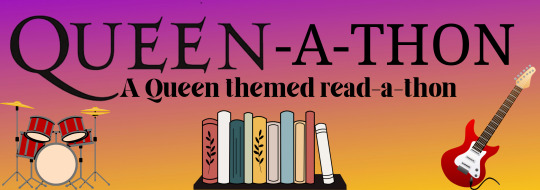
So, for those who are unaware, I am a big fan of the band Queen (I have a tattoo and everything lmao). Last year, over on my queen fandom sideblog, I created a small readathon inspired by the band, mostly just to encourage myself to read a bit more than I was. But I thought, now that I’m being more active on here, why not do it again! So...
Welcome to the second year of the Queen-A-Thon!
This readathon will run for 14 days (2 whole weeks!) from September 17 through to September 30 (starting and ending at Midnight in whatever timezone you inhabit) which hopefully will give you enough time to get some serious reading in around work/study/whatever else.
Similar to last year, there will be 2 main ways to participate in this readathon. The first is by reading, naturally. To aid you there is a bingo board of prompts, all inspired by Queen and their songs. The second way to join is is by responding to discussion prompts. There is a list of daily prompts to encourage community interaction, each one named after a Queen song and related to reading/books in some way. More info about both parts of the readathon and the prompt lists are below the cut but there will also be 2 followup posts going through them in more detail, so keep you’re eye out for those!
Whichever prompts you choose to respond to and however you do it, tag your posts with #queenathon so I can see and share them!
Reading
This year I’ve created a bingo board full of prompts. All you have to do is read as many books as you can to try and cross off prompts and see how many bingos you can get! Books can count for multiple prompts, as many as you’d like, and it's totally up to your own discretion as to how they count, so you may be able to get a bingo with just one or two titles. I’ll be making a separate post with details about the prompts - what inspired them/how they relate to Queen/maybe some suggested titles? - but for now here’s the bingo board. The yellow prompts on the diagonal are all activity based rather than prompts for books to read (an idea I 100% stole from Book Browsing Blog’s whateverathon over on youtube).
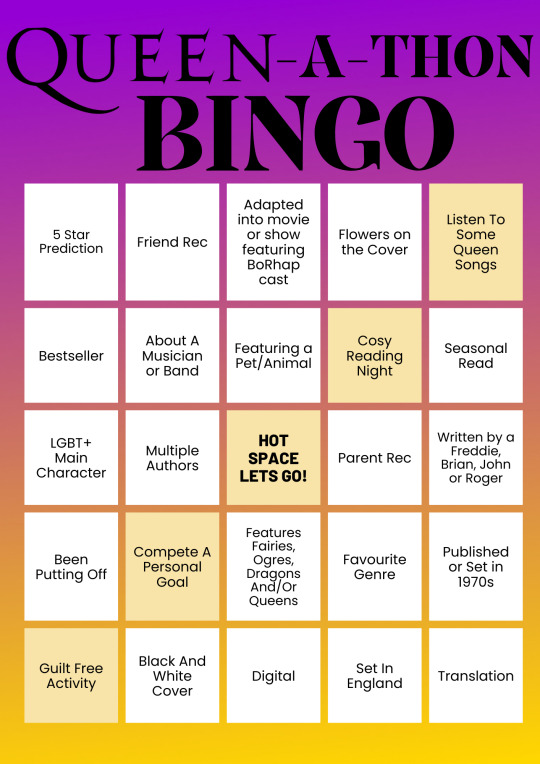
Discussion
In addition to the reading prompts I’ve also created a list of 14 discussion prompts, each one named after a song by Queen. You can respond to as many or as few of them as you like and I encourage you to respond in whatever way you're most comfortable with – simple text posts, photos, graphics, or even videos if you like). The aim of the game is to have fun with it! These are ideal for people who don’t think they can complete a book during the 14 days but still want to participate, or anyone who just likes talking about books and reading. Again, I’ll be doing up a separate post explaining them but here’s the list of prompts:
Day 1: Coming Soon - Your goals for the Readathon
Day 2: Liar - Experiences with negative recommendations
Day 3: I’m In Love With My Car - Thoughts on reading while travelling or commuting
Day 4: If You Can’t Beat Them Join Them - Experiences with reading books hyped by online communities like booklr or booktok
Day 5: Man On The Prowl - Tell us about your favourite place to buy books
Day 6: Life Is Real - Thoughts on non-fiction
Day 7: Don’t Stop Me Now - Mid-readathon check in!
Day 8: Procession - Thoughts on reading series
Day 9: Lap of the Gods...Revisited - Thoughts on re-reading books
Day 10: Long Away - Do you have any anticipated reads?
Day 11: I Was Born To Love You - Do you have any must-buy/read authors?
Day 12: Dreamers Ball - Design your dream home library/reading space!
Day 13: The Millionaire’s Waltz - Show us a bookish haul!
Day 14: Was It All Worth It? - Tell us how you went with the readathon!
21 notes
·
View notes
Text
Recently, I participated in an academic study on fandom and these were a few of my answers.
Why are you part of a fandom? Is it the show, is it the community, or something else?
I love stories. The comfort and joy I find in them is immeasurable. They stir my imagination and make me see the world in a different light. Conversations in real life about stories are often perfunctory: noting whether you liked or disliked it, maybe a few examples to support that opinion, and then the topic changes.
Fandom is a prolonged conversation to explore all the nuances of this medium with other likeminded individuals. Artists and designers create illustrations, graphics, and gifs to highlight characters, scenes, and themes. People write meta to point out the meaning behind a character's actions and analyze the themes presented in the story, including symbolism, beliefs, and values. Writers create new fictional stories to continue where the show left off, reimagine things they didn't like, focus on a side character, or create an entire alternate universe. There is something profound about finding others to share both the joys and disappointments of a story. It can elevate your own experience with the story and its characters. Television shows in particular are a good breeding ground for fandom because new material to enjoy and dissect is often provided weekly for multiple years.
My two favorite ways to participate in fandom are through creating graphics and gifs and writing meta analysis of the story. These are the things I am most interested to see and read from other people as well. However, I also love making the fandom easier to find and participate in for others which is why I have run at least 5 different fan communities over the years by searching for and reblogging content to a dedicated show blog (including Timeless).
While I may join a fandom for a specific show and the community that comes with it, I have made friendships that go beyond one particular show. These people have become a multi-fandom friend or acquaintance. We had a specific fandom community in common at one point but after that show ended, went on hiatus, or took a story turn for the worst, we are no longer part of it but have continued to respect each other's opinions about other shows, often encouraging each other to watch the new show we are enjoying. This to me is as important (if not more important) than being in a specific show fandom because if you try to participate in online fandom it can often feel like you are screaming into the void if no one acknowledges your post. A multi-fandom friend's comment means more than the number of likes because it shows that you are in conversation with each other which is how community is built and sustained. This year is my 20 year anniversary in participating in online fandom. I have watched many shows and jumped to new platforms several times but these multi-fandom friends are the ones that have kept me going even when I am between shows.
When you post about your show(s), is there a specific goal in mind?
If fans have already written their thoughts or made gifs and they align with how I think and feel about the show, then I will interact with their post rather than creating my own. The main reason I post is to highlight something I haven't seen before to add something new the conversation, either my thoughts about the story or gifs for a particular character or ship.
6 notes
·
View notes
Text
The End
Hi everyone,
If you’re coming here from Webtoon, you’re in the right place! If not, I don’t know how you found this, but you’re in for a real long post :)
Anyway, again, I hope you and your loved ones are all well and safe. Take care of yourselves.
And as I said on Webtoon, though there are many reasons why I’m deciding to end my comic, I think the main one is because it’s time to move on.
To be honest, in the several months leading up to now in December, I felt that I lost my passion for drawing Philoslothical. I’m not sure what it was exactly, but it just didn’t feel as fun as it used to. I think I’ve changed as a person and grown as a person and maybe the types of things I want to create have changed as well. I used to love toiling away at this comic in college and the last few years, and kept at it even before it became the small success it is today. But today… I just don’t feel that anymore. And I can’t explain it, really. Sometimes things like this just happen.
But the thing is, I don’t see it as a bad thing. Actually, it’s a great thing. I don’t regret drawing Philoslothical, not at all. I think it helped me become the artist and person I am today, and really got my feet wet with making digital art, comics, and becoming a content creator. It’s a great stepping stone towards my lifelong goal of being an artist, and I’m glad to have done it and taken away from it the knowledge, skills, and experience I’ve gained from the 4 years or so I worked on it.
And this all comes back to moving on. Because nothing lasts forever, and everything comes to an end at some point. Moving on from Philioslothical gives me the freedom to pursue other creative projects I’ve been thinking about, which include other webcomics and graphic novels, and even games! I love designing and developing indie games, drawing all the art and making the music and sound effects for them - it makes me happy and it’s such a rewarding experience for me.
I actually published my first game just yesterday, called “Dive”. It’s an indie adventure RPG, with a pixel art style, where you dive deep in the ocean to collect ingredients for a remedy for your mother’s illness. This game started out as just a fun prototype back in May, but then I started getting really into it, really passionate about building it out, and now it’s done. I know for sure that this isn’t the best game I can make, but I’m proud of what it is right now. Here’s a link if you’d like to check it out: https://bitsloth.itch.io/dive
So there it is. My thoughts spilled out on the page. My lifelong dream is to be artist, to make comics and graphic novels and video games, and just overall make stories come to life in my own unique way. And I’d love to share that with you, in whatever form that it takes next in the future. I’m not super fond of social media (which I know that tumblr is, but it doesn’t really feel like it), so I just have this “blog” here for now that I made for the sole purpose of this post. But for now, if you’d like any updates on anything I’m doing, just check back here periodically! I’ll post with any new major project updates here, as well as on Webtoon as a new episode. A new project will likely be if I decide to start a new webcomic, or if I’ve published a new game - something like that, which I don’t have any concrete plans to do anytime soon, so this blog will remain sparse for a little while.
If you’ve made it to the end, thanks for reading this. Thanks for reading my comic and believing in me and my work. And thank you for all the kindness and support over the years.
Allen
2 notes
·
View notes
Photo





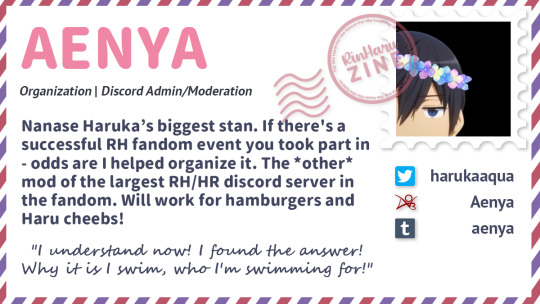

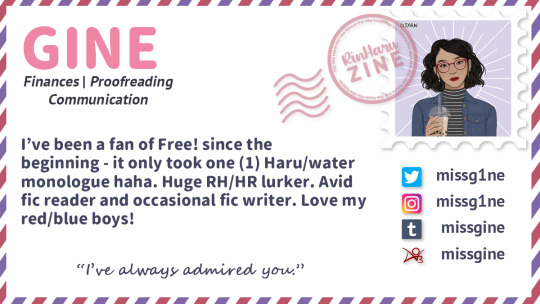
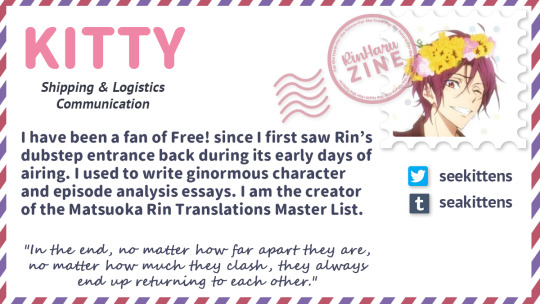

We're proud to announce the hardworking and talented Mod Team for the upcoming RinHaru/HaruRin Zine! ❤️💙
Meet Julie, the Team Captain and social media master of this project! (That's me! 💖)
Julie | Team Captain, Social Media, Finances
Twitter: starstarfairy
Tumblr: starstarfairy
Instagram: starstarfairy
AO3: starstarfairy
“I’ve been a fan of Free! since day one! Occasional fanartist and fanwriter, frequent RH/HR merch collector, always RH/HR lover! (And a member of the RH week mod team for the past 2 years! Yay!)“
Because it’s here, because it’s you, these feelings can be true.
Click through to meet the rest of the mod team!
Nat will be one of the mods in charge of communications, and handling emailing and responses to contributors - you want to stay on her good side! 😉
Nat | Communications
Twitter: schangia_
AO3: Schangia
“I’ve been into Free! ever since it was still called Swimming Anime and the best boys didn’t have names yet. No matter how many years pass, RH will always be my otp.“
As always, I can’t make any sense of you.
Jem will also be in charge of communications, and is also our main proofreader. There will be no typos with her on board! 💯
Jem | Proofreading, Quality Control
Twitter: JemKingOfSass
Tumblr: rin202haru630
AO3: JemTheKingOfSass
“There isn't another anime quite like Free. Rin is painfully relatable, and his relationship with Haru is nuanced, dynamic, and fluid, they make the other shine brighter. I'm a reader and writer in the Free fandom, I've been an on-call beta-reader for multiple (other) fandom events. I will never move on from The Hug.”
Let's swim together, Nanase. If you swim with me, I'll show you a sight you've never seen before!
General organization (and newspaper whacking 🗞) will be up to Hina. Cheerleading free of charge!
Hina | General Organization, Proofreading, Quality Control
Twitter: hinalilly
Tumblr: hinalilly
AO3: Hinalilly
“Here since 2013. Artist, writer, organizer and mod of several RH/HR events (including FOH, RH Week) and mod of the largest RH/HR discord server in the fandom. Motivational bunny!”
From the moment we met, my world has kept expanding.
The Discord server will be modded by the experienced and code-savvy Aenya! Also has dibs on all spreadsheets, do NOT touch 👀
Aenya | Organization, Discord Admin/Moderation
Twitter: harukaaqua
Tumblr: aenya
AO3: Aenya
“Nanase Haruka’s biggest stan. If there's a successful RH fandom event you took part in - odds are I helped organize it. The *other* mod of the largest RH/HR discord server in the fandom. Will work for hamburgers and Haru cheebs!”
I understand now! I found the answer! Why it is I swim, who I'm swimming for!
Seda is one of our two talented graphic designers! We're lucky to have her with us! 🌸
Seda | Graphic Design
Twitter: wangxianity
Tumblr: rinsuokah
AO3: smolandsassy
“I have been a fan of these swimming nerds since the very beginning.
A graphic designer, a member of RH week team and most importantly a passionate lover of RH/HR!”
Haruka and Rin just feel like the ‘destined pair’ for one another.
Owing to ample experience in the area, our finances will be in order with Gine at the helm! 💞
Gine | Finances, Proofreading, Communications
Twitter: missg1ine
Tumblr: missgine
Instagram: missg1ne
AO3: missgine
“I’ve been a fan of Free! since the beginning - it only took one (1) Haru/water monologue haha. Huge RH/HR lurker. Avid fic reader and occasional fic writer. Love my red/blue boys!”
I��ve always admired you.
The zines themselves will be safe in the hands of Kitty, in charge of shipping and logistics! ❣
Kitty | Shipping & Logistics, Communications
Twitter: seekittens
Tumblr: seakittens
“I have been a fan of Free! since I first saw Rin’s dubstep entrance back during its early days of airing. I used to write ginormous character/episode analysis essays. I am the creator of the Matsuoka Rin Translations Master List.“
In the end, no matter how far apart they are, no matter how much they clash, they always end up returning to each other.
Last but certainly not least, Yami, our other talented graphic designer, and in charge of putting the actual zine together. Also responsible for creating these adorable Mod Info Cards! 💖 (Thank you!!)
Yami | Print & Graphic Design
Twitter: yamisakura012
Instagram: frillyfujoshiyami
AO3: frillyfujoshiyami
“I have been in love with Free since day one~ Rin was instantly my favorite character and then Haru swam right in to complete my love for the series. I’m an occasional writer, merch and doujin collector, and part-time translator for anything RH/HR related.”
Rin, it's my turn to show you a sight you’ve never seen before.
That's all of us! We'll do our best during the upcoming months to steer this project to the goal. We look forward to working with you! 🌸
Stay tuned on all our social media accounts for updates: rinharuzine.carrd.co
See you next water time...
38 notes
·
View notes
Text
HAPPY BIRTHDAY FIRE EMBLEM!!!
Y’all, the 30 year anniversary!!!!
My first video game ever was Fire Emblem Sacred Stones on my brother’s black Game Boy Advanced “console”... I still remember being so shocked by that main intro, my god - hhhh it was so pretty!!!

Just... shoutout to this texture. This game was so amazing and colourful, I would love to see it remade.
My first crush ever was Joshua from this very game, who I have made posts about before... and Lyon’s theme still makes me cry every time I hear it. Those flashbacks hit different. GAH!
Between 6-years-old and middle school, I played a lot more Fire Emblem games, like Shadow Dragon and Tellius... and while they were good, none of them hit as hard as Awakening did when it dropped. Do y’all remember when Awakening dropped and you first saw that customisation page?? And those cutscenes for the first time?
It was nothing like I had ever seen, and even as the games continue to get better and better in quality both of writing and graphics, Awakening will always hold a very close spot in my heart as the game that really shaped a lot of my childhood and personality, to be honest.

Id: Purpose makes me sob every time I hear it. I just remember the emotional roller coaster this game brought me through, through roadtrips and trainrides and plane flights across the US. I have logged over 500 hours on Awakening that are recorded, let alone all the times I started and stopped new playthroughs. My peak achievement was defeating Grima in 2 hits using Ricken equipped with a ladle.
That brings us to Fates... I know that Fates has a tricky rep within the fandom, so I won’t go too into detail. I have fond memories of the day my brother and I went to the store to buy the games, and we didn’t tell each other which game we would be purchasing. Until we walked up to the counter, me with Conquest in my hands and him with Birthright. From then we knew it would be a battle within the home, haha.
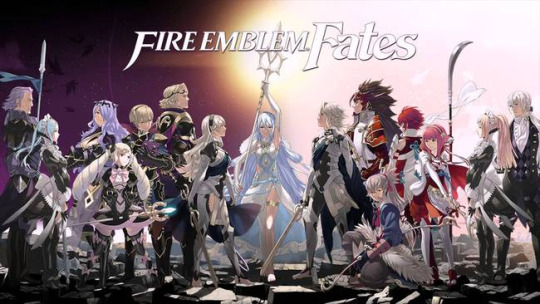
My brother is the better strategist than I am, but I grind my characters. It was really hard in Conquest, but I found a way, and whenever we would do castle battles, it was always evenly matched; my powerful Nohrian team against his brilliant tactics.
Additionally, although it was limited, the option of Bisexual S-ranks for Niles and Rhajat was very nice. I understand the contract rules that go into making games, especially in this franchise, but it was a step forward, and the representation for me as someone of the LGBTQ+ community was very nice. I understand that some people in the community remain frustrated with the minimization of the representation, but it was a step in the right direction for me.
Also, just the energy of Fates... The full creation of both kingdoms was so satisfying, and the cutscenes were crisp and lovely. And Corrin/Kamui’s design!!! The dragon blood techniques... I loved Fates. It was very exciting.
And more recently... Three Houses. The most I can say to start off... WOWZA.
I have more to say about this game than I can put into words, really. I bought my switch only aware of this game, and still to this day I don’t own many other games for my switch since Three Houses has taken up so much of my time.
Three Houses is incredible. The extent to it all, with the full voice lines and the quality of production, depth of character and story and the fact that it’s essentially THREE (four/five) games in one is so fantastic. Every character has such depth and detail, and it has inspired so much incredible art and writing.
I, for one, have always struggled with writer’s block, but had a passion to write. This game changed that. By coming out on the Nintendo Switch, it opened up Fire Emblem to a broader community and gained an onslaught of fans passionate about the experience and ready to share what they could do. For once, I had a much more solid base of people to receive my writing. Recently, I finished my first multichapter fanfic, and have (since January of this year) written over 250 pages of fanfiction just for Three Houses. It’s utterly incredible.
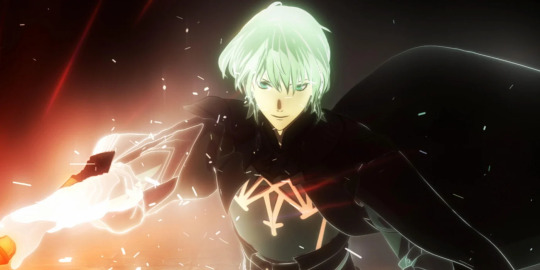
And going onward with representation, this game deals with such depth of character that it is impossible to ignore their values. It deals with topics of racism, mental illness, sexuality and identity... and throughout it all, it remains a Fire Emblem game as if to encourage people that despite how scary the world can seem with those things, it always moves on. Despite the real-life topics, it is set against a backdrop of Kings and Queens and Emperors, Knights and magic and the question of chivalry with a goal in mind and so many allies to support you along the way.
The cast of this game has been lovely, and the quality resonates clearly with the value and the legacy that the game has. It’s fantastic.
I didn’t mention some of the games, but also - thanks to Heroes!! It has opened Fire Emblem to a whole new audience, and brings together so many more creative artists and fun communities... It’s amazing.
In short, I would not trade Fire Emblem - the series, the producers and studio, anything - for the world. It has shaped so much of who I am as a character, provided me solace in times where everything is changing too fast and I can retreat into a world with friends, allies, and goals.
Whenever I think of these games, I think of my brother as well. He introduced them to me, and it’s something we’ve been able to share this whole time even when real life divided us.
I wish I had more words to articulate how this series makes me feel, but I truly do not. My passion for this series is beyond words. So - all I guess I can say is:
Happy Birthday, Fire Emblem Series!!! Congrats on 30 years, and thank you so much for everything!!!
Fanfiction.net @ Thirth Floor; AO3 @ ThirthFloor
#fire emblem#fire emblem series#anniversary#fire emblem awakening#fire emblem fates#fire emblem conquest#fire emblem birthright#fire emblem sacred stones#fire emblem tellius#fire emblem shadow dragon#fire emblem heroes#fire emblem three houses#fire emblem 30 years#video games#appreciation post#fire emblem if
75 notes
·
View notes
Photo
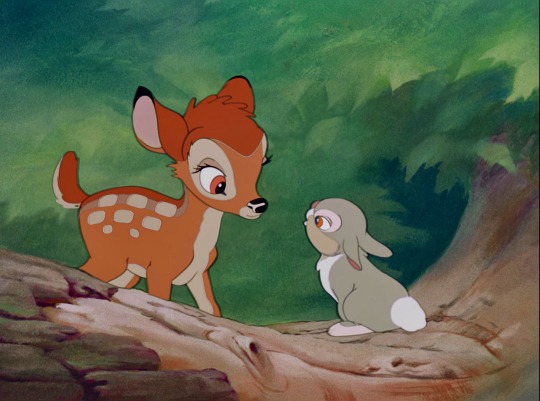
Movie Odyssey Retrospective
Bambi (1942)
In the early 1920s, Austrian Felix Salten began working on his best-known novel. Salten, a prominent Jewish author, was an avid outdoorsman who closely observed the habits of wildlife in the Viennese countryside. His experiences led him to write Bambi, a Life in the Woods, which became a bestseller in Europe. It was a bestseller in the United States, too, but Salten’s work had somehow been recategorized as a children’s book when exported across the Atlantic. Metro-Goldwyn-Mayer (MGM) producer Sidney Franklin (1942’s Mrs. Miniver, 1942’s Random Harvest) purchased the film rights, but he experimented and failed to find a satisfactory way to adapt Salten’s novel. Frustrated, Franklin handed the reins to Walt Disney. While Disney took on this new project, the Nazi Party banned Salten’s novel – claiming it to be, “a political allegory of the treatment of Jews in Germany.”
Salten, who soon fled for neutral Switzerland (never to return home to annexed Austria), may have inserted some such allegories, but that is not his novel’s primary intention. In one of the novel’s most memorable passages not present in the Disney adaptation, Bambi’s father shows his son a poacher’s corpse – another human has shot this poacher. In realizing humanity’s fragility and its sameness to the animals of the forest, a frightened Bambi, while examining the poacher’s body, declares, “‘There is Another who is over us all, over us and over Him.’” Salten’s novel and the 1942 Disney adaptation directed by David Hand are about the inevitability and universality of death – subject matter not exclusive to children.
Bambi was slated to be the second animated feature by Walt Disney Productions (now Walt Disney Animation Studios). Due to production delays, narrative confusion, aesthetic difficulties, and especially the Disney animators’ strike of 1941, it is the fifth and last entry of the studio’s Golden Age. Whether because of or despite these delays, Bambi seems an outlier in the Disney animated canon. It bears scant artistic resemblance to any of its predecessors or successors. To the bewilderment of viewers who believe that a great movie requires plot, Bambi dispenses of such notions. If conflict appears, it is resolved immediately – with one continuous exception. As Walt Disney insisted on the animation being as realistic as possible while retaining anthropomorphic qualities, the True-Life Adventures series (1948-1960; fourteen innovative nature documentaries that continue to influence the subgenre’s narrative and visual grammar) remains Bambi’s closest cousin in the studio’s filmography. Bambi – wildly innovative, underappreciated upon release and today – completes a consecutive run of five animated features for a Golden Age. Rarely matched today are the standards set by those five films.
This film is a coming-of-age tale; more specifically, it is about a male fawn’s experiences and observations on the natural life cycle. It begins with Bambi’s birth and concludes as Bambi inherits his father’s role as Great Prince of the Forest. This animated Bambi is less pedantic than Salten’s book, which focuses on Bambi’s survival lessons from the other woodland creatures. Instead, story director Perce Pearce (1940’s Fantasia, 1943’s Victory Through Air Power) and screenwriter Larry Morey (primarily a lyricist; 1937’s Snow White and the Seven Dwarfs) adopt a free-flowing episodic structure where Bambi lives life innocently, with violence puncturing through the idyll rather than being omnipresent. We see him befriend the rabbit Thumper and skunk Flower, learn to observe his surroundings before grazing in the open meadow, and play in the snow and on the ice come his first winter. There are comic misunderstandings and warnings about men, neither of which dominate the film.
Bambi also takes time, for a minute or a few, to avert its concentration from its protagonist to other animals. In a less disciplined film, these decisions might undermine the film’s goals – in this case, to portray nature as faithfully as possible within the bounds of a loose narrative. But each of these scenes focused away from Bambi either strengthen Bambi’s characterization, the liveliness of the forest, or the film’s messaging.
A handful of scenes including the elderly Friend Owl introduce us to Bambi and his mother as well as those adolescent, animalistic romantic tinglings he calls “twitterpation”. Friend Owl moves the film forward in ways that abided by the censors at the time, as well as introducing concepts to Bambi and friends in just enough time that is necessary. The most graphic moment during the first scene featuring the hunters (who are never depicted, aurally or visually) does not concern Bambi and his mother, but a few nameless pheasants. Covered in shadow by the long grasses, one of these pheasants speaks of the impending danger, and the audience hears the terror in her tremulous voice. Flying out of the underbrush in a desperate attempt to flee, she is shot by the hunters, and drops to the ground. The frame shows the pheasant’s corpse, but does not linger. This is the only depiction of a dead animal in the film – contrary to the recollections of many viewers. For younger and older viewers alike, this scene emphatically communicates the dangers that Bambi’s mother has warned about, priming the audience for what is to come, and doing so without sensation.
It leads directly to a scene that has become a sort of childhood rite of passage. The death of Bambi’s mother in a later scene has traumatized multiple generations of viewers – intrepid, timeless cinema. As Bambi and his mother are grazing on early Spring grass in the meadow, the latter senses movement and pokes her head up, turning her head realistically as if on a swivel. Her eyes are wide, unnerving. She looks straight at the audience; this would be the stuff of fourth wall-breaking comedy in any other context, but here it is almost inquisitive. Bambi is one of the few Disney canonical films in which what is happening off-screen is equally (if not more) important than what the audience is seeing – something most evident here. The film stubbornly fixes its perspective on the deer and the snow-blanketed backgrounds that emphasize how exposed they are. They flee. There is no cover as the editing becomes more frantic, closing in on the deer’s terrified faces as they rush back to the thicket. A shot rings out. The film’s score – a constant presence throughout Bambi until now – decrescendos from broadening string lines to a chorus vocalizing pianissimo (mimicking the wind-blown snow drifts), and disappears completely when the Great Prince of the Forest appears.
The Great Prince is obscured by the falling snow.
“Your mother can’t be with you anymore.”
Silence. Stillness.
Bambi sheds but a single tear. He walks away with his father and, mirroring his deceased mother, looks towards the audience – this time, not in accusation or inquiry, but faint hope. Cynical viewers label this scene as anticlimactic due to Bambi’s lack of expression. But the filmmaking preceding it – a combination of the editing by Thomas Scott (1939’s Beau Geste, 1948’s So Dear to My Heart); the compositional decisions by composers Frank Churchill (Snow White, 1941’s Dumbo) and Edward H. Plumb (1944’s The Three Caballeros); the attentive character animation by artists too numerous to single out here; and the moody lighting and brushstroke textures to the backgrounds set by Tyrus Wong (1956’s Giant, 1969’s The Wild Bunch) – helps justify Bambi’s reaction. Some of the most important, at times traumatic, moments in life are silent and still. There is just enough pathos here without being anticlimactic or maudlin, or to be patronizing towards young viewers.
And yet the next scene shows Bambi grown up, in the middle of Spring, at play. There is no allusion to the tragedy on-screen a few minutes prior. The filmmakers are not minimizing Bambi’s trauma or nature’s violence, but saying that life nevertheless continues. There is growth, the acceptance of grown-up responsibilities, romance, love, child-rearing. Stags – like Bambi and the Great Prince – mate with does, but do not participate in the lives of their fawns. Unlike other Disney films where animals assume greater anthropomorphized qualities (1967’s The Jungle Book, 2016’s Zootopia), Bambi’s naturalistic approach contradicts any application of human norms and values onto its animals.
For years, this meant struggling to animate wildlife – especially deer. Rendering deer in appealing ways is difficult, due to the shape of their face and the positioning of their eyes on either side of the face. In the end, the animators went with character designer Marc Davis’ (Davis also led the character design of Thumper, Flower, and Cruella de Vil from 1961’s One Hundred and One Dalmatians) outlines: maintaining realistic deer anatomy, but exaggerating the face with a shorter snout and larger eyes. The Great Prince’s antlers proved most infuriating due to the intricate perspectives in animating them. When the animators resolved that they could not animate antlers from scratch, a plaster mold of deer antlers were made and was Rotoscoped (projecting live-action film onto an image for an animator to trace it) the film’s animation cels.
But the most remarkable contribution to Bambi comes from Tyrus Wong. Wong, a Chinese-born American artist, established the look of Bambi’s painterly backgrounds. Based on landscape paintings from the Song dynasty (960-1279; a Chinese historical period when landscape painting was in vogue), Wong’s concept art caught the eye of colleague Maurice “Jake” Day. Day, a photographer, illustrator, and naturalist, spent weeks in Vermont and Maine, sketching and photographing deer and the woods surrounding them. His sketches, however, were deemed too “busy”. By comparison, Wong’s concept art – using pastels and watercolors – is impressionistic, deeply atmospheric. Disney, impressed by Wong’s work, appointed him to be lead production illustrator, and instructed the other background animators to take inspiration from Wong’s concept art. Wong’s lush backgrounds have graceful dimension (a hallmark of Song dynasty landscapes), seemingly extending the forest beyond the frame. A brushstroke implies dimensions to the forest unseen. Wong’s sense of lighting – whether soaking in sun-bathed greens or foreboding black-and-white, blues, or reds – helps Bambi smoothen otherwise abrupt tonal shifts.
Nevertheless, history downplayed Wong’s enormous contribution to one of the greatest animated films ever made. The studio fired Wong shortly after Bambi’s completion as collateral damage from the aftermath of the Disney animators’ strike – by the terms of the agreement with the strikers, Disney recognized the animators’ union but would lay off a union-approved equal ratio of strikers and non-strikers. Wong later found work as a Hallmark greeting card designer and a production illustrator for Warner Bros. Retiring in 1968, Wong was contacted by Disney to serve as a sketch artist for Mulan (1998) – Wong declined, stating that animated films were no longer a part of his life. Only within the last decade has Wong, who passed away in December 2016 at 106 years old, received due recognition for his contributions that his on-screen credit does not reveal.
youtube
Perhaps inspired by his meetings and collaboration with conductor Leopold Stokowski and music critic Deems Taylor for Fantasia, Walt insisted on a film score to be present across Bambi’s runtime. Composers Frank Churchill and Ed Plumb take inspiration from the Silly Symphony shorts made prior to Snow White – Bambi’s score and soundtrack occasionally blends with the sound mix and it liberally uses “Mickey Mousing” (the synchronization of music with actions, most notably footsteps, on-screen). With the writing team periodically revising Bambi, Churchill and Plumb waited until the final structure of the story was set before composing the music. Transcripts from the Disney Archives also reveal an emboldened Walt – again, perhaps inspired by his experiences from Fantasia – to insert his own preferences in how the music should sound. Walt, a man who once professed that he, “[didn’t] know beans about music,” was more musically articulate than he had been before Fantasia, and was unusually influential in the film’s orchestration. In the end, the Churchill and Plumb score is largely framed by the opening credits number, “Love is a Song”.
Love is a song that never ends.
Life may be swift and fleeting.
Hope may die, yet love's beautiful music
Comes each day like the dawn.
In a few short stanzas, the composers begin a score that falls silent only two times: when Bambi’s mother mentions “man was in the forest and when the Great Prince of the Forest appears shrouded in snow. If one did not already associate it with the actions of the film’s characters, Bambi’s fully-orchestrated score sounds like a lengthy, motif-filled tone poem that can be heard in a concert hall. Listen to the string harmonies supporting the “Love is a Song”-vocalizing chorus during “Sleep Morning in the Woods/The Young Prince/Learning to Walk” beginning from 4:19-5:20. That sort of harmonic density would not be out of place in a late Romantic-era concert hall. Occasionally, that tone poem of a score gives way for the limited musical soundtrack like “Little April Shower” – the film’s best song, and one where instruments and vocalizing humans serve to simulate the sound of rain and wind. Bambi contains some of the tenderest music, reflecting the film’s thematic content, in the Disney canon.
Upon release, many critics and audiences found Bambi a step backward for Disney, caring not that the studio’s namesake and its animators agonized over its realism. Disney had upended the moviegoing world’s expectations with Snow White and spawned competing studios looking to replicate that alchemy. But in doing so, the studio also coded audience and critic expectations that animated film should only be fantastical. To strive for realistic animation to reflect nature was, “boring” and “entirely unpleasant” – for these critics (who say nothing about how animation can guide emotion), animated fantasy was innovative because it bent reality in ways live-action cannot portray. Echoing the most vehement criticisms hurled towards Fantasia, Bambi’s then-contemporary naysayers implied that even attempting to animate nature realistically and ignoring fantasy would be a pretentious exercise. In columns and tabloids, the American media also devolved into a mud-slinging debate over whether Bambi – because of its off-screen portrayal of humanity – defamed hunters.
By similarly contradictory logic, animated film in 1942 was mostly perceived as children’s entertainment – an attitude that has been dominant ever since, and one that yours truly tries to discredit with exasperating frequency. With no other rival animation studios attempting anything as ambitious as a Fantasia or Bambi, gag-heavy short films from Disney and its competitors contributed to these widely-held views. With World War II underway, the dissonance of expectations would only escalate. American moviegoers, though wishing to escape from the terrible headlines emerging from Europe, North Africa, and Asia, believed animated films too juvenile for their attention. Bambi – a dramatic film intended for children and adults – faltered under the burden of these wartime contradictions. It would not make back its production costs during its initial run.
This commercial failure, on the heels of the animators’ strike, cast a shadow over Disney’s Burbank studio and on Walt himself. Walt would never publicly admit this, but he believed he had been too focused on animated features. So much of his creative soul and experimental mind had been dedicated to the Golden Age films, but at what cost? The critical and commercial triumphs of Snow White and Dumbo were offset by Pinocchio’s (1940) budgetary overruns and the headline-grabbing negativity (by music and film critics) that financially drowned Fantasia and Bambi. Internal divisions that led to the animators’ strike nearly destroyed the studio; heavy borrowing from Bank of America resulted in runaway debt. Walt – spiritually and physically – would not be present for the rounds of layoffs (mandated by the agreement with the striking animators) that almost halved the studio’s staff after Bambi’s release. He accepted a long-standing offer from the Office for Inter-American Affairs to embark on a goodwill tour of South America to help improve relations with Latin American nations (as well as collect ideas for future animated films).
Bambi remains a sterling example of Walt Disney Animation Studios’ artistic daring. The film pushes realistic animation as far as the technology of its time can. It does so not only for the sake of visual realism, but to reinforce the profound emotions it has evoked for decades. The film’s tragic dimensions are legendary, oft-parodied; yet this does not (and should not) define it. Almost eighty years since its debut, Bambi’s reputation continues to be mired in the contradictions that first greeted its release. There are some who still believe that animated cinema, by its nature, is specifically for children. And by an extension of that thought, some believe tragedy has no place in animated cinema. What a limited view of art that is, an underestimation of humanity’s capacity for understanding.
Bambi concludes the Golden Age of Walt Disney Animation Studios. Since its departure from theaters, moviegoers have rarely been treated to animated cinema of equal or greater maturity – let alone from Disney itself. The artistic cavalcade of Snow White and the Seven Dwarfs (1937), Pinocchio (1940), Fantasia (1940), Dumbo (1941), and Bambi (1942) resulted in five consecutive films resembling nothing like the other, but all united in ferocious innovation. The central figure of this Golden Age, Walt Disney, was personally involved in each of these works; the end of this so-called Golden Age comes as he stops dedicating himself so completely to the studio’s animated features. In their own ways, each film helped define what animated cinema can be and who it is for. That debate remains fluid, one where the principal interlocutors learn from or disregard the lessons of this Golden Age.
My rating: 10/10
^ Based on my personal imdb rating. Half-points are always rounded down. My interpretation of that ratings system can be found in the “Ratings system” page on my blog (as of July 1, 2020, tumblr is not permitting certain posts with links to appear on tag pages, so I cannot provide the URL).
For more of my reviews tagged “My Movie Odyssey”, check out the tag of the same name on my blog.
This is the seventeenth Movie Odyssey Retrospective. Movie Odyssey Retrospectives are reviews on films I had seen in their entirety before this blog’s creation or films I failed to give a full-length write-up to following the blog’s creation. Previous Retrospectives include The Wizard of Oz (1939), Mary Poppins (1964), and Oliver! (1968).
#Bambi#Walt Disney#David Hand#Perce Pearce#Larry Morey#Jake Day#Tyrus Wong#Frank Churchill#Edward H. Plumb#Felix Salten#Disney#My Movie Odyssey
10 notes
·
View notes
Text
SAGE 2020: The Usual Suspects

Hi, folks! Back when I used to work at TSSZ a lot of people really enjoyed reading my articles where I’d talk about various games at the Sonic Amateur Games Expo (SAGE), and I’ve gotten more requests in the last month and a half to continue doing those types of articles than I think I’ve ever gotten about anything else I’ve ever done before. So, here we are!
But I also need to be real with you: there are a lot of games at SAGE. It was exhausting enough when there were 70, 80, or even 90 games. Heck, the one year I wrote about 85-something games by myself, I sort of felt like I was going to die. This year, there are over 220 games at SAGE. It is physically and emotionally impossible for me to talk about everything, and it may even be impossible for me to play everything. Things will fall through the cracks. Most things, probably. Though I am responsible for basically inventing SAGE 20 years ago, I am also a human. I have my limits, and I am sorry it has to be this way.
Structurally, we’re going to be doing things a little bit differently, and you should expect this to be a little fast and loose. Since I’m not talking about every single game on the show floor, articles are going to be broken up into types:
“Usual Suspects” will be for games that either appeared at previous SAGEs or that I’m at least aware of.
“Fan Games” should be obvious, and it’s whatever doesn’t fall under Usual Suspects.
“Indies” is the same deal, but for original games.
And finally, there will be a “Honorable Mentions” article for whatever random leftovers I don’t cover in the first three articles. Looking forward to me talking about your game, but I don’t mention it? Tell me about it and maybe it’ll end up here.
Without any more delay, let’s talk about those Usual Suspects...
Sonic GT
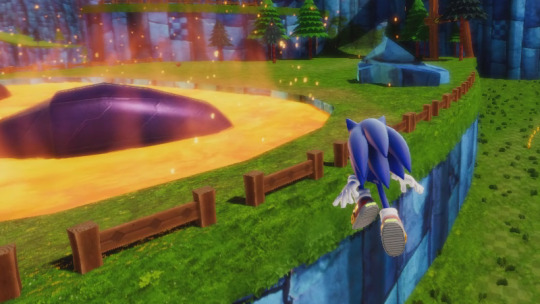
Sonic GT has always been kind of a difficult game to control, but usually it just took a little bit of getting used to. There was always a period of adjustment, where you had to learn the game’s quirks. But, over time, I feel like the game is also just getting… quirkier. Every time I come back to this, I slam head first into the Sonic GT’s learning curve, and it always feels just a little bit steeper. This is one of those games that tries to fit a lot of abilities into a tiny amount of buttons. It works, but it feels like you have to memorize an operator’s manual. It’s all about figuring out which button to hold when to get what state. But, man… when it clicks into place, it’s still kind of magic. And, at the very least, the levels have all been reworked to take better advantage of Sonic’s high-flying, death-defying acrobatics. You’ve just got to be willing to learn. The real downside of this new version is the inclusion of a proper story mode -- I don’t have anything against having cutscenes in your game or whatever, but for the purposes of reviewing these games, some ability to fast forward through the talking heads so I could get back to the gameplay would’ve been nice. You can skip ahead in cutscenes you’ve already watched, but that doesn’t help when it’s your first time through. Oh well. So it goes. (Update: in the process of getting this article posted, Sonic GT has been patched to make cutscenes always skippable.)
Project SXU (Sonic X-treme Unity)
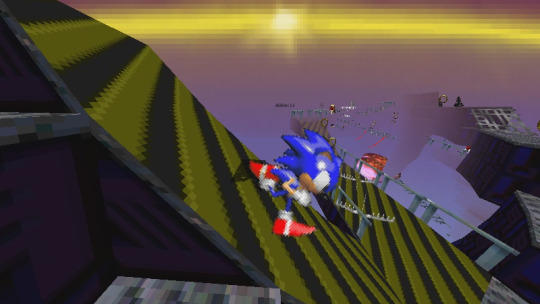
Another year, another Sonic X-treme recreation. This one’s interesting because it seems to be the most “complete” yet, offering the four most famous levels: Jade Gully, Crystal Frost, Red Sands and Death Egg. Intentionally or unintentionally, this also seems to replicate quite a few quirks we’ve seen in Sonic X-treme’s controls in the videos that have been released of the in-development build. Which means that it, uh, kind of sucks to play. I realize that’s kind of rude, but I’m sort of allowed to say that. 15 years ago, I was basically the only person on the internet that cared what happened to Sonic X-treme, so... I started contacting developers, starting with the game's producer, Mike Wallis. He lead us to Chris Senn, and that broke the dam on information about this game. Now, I don’t claim ownership over everything that came out of this, I’m simply saying I was the one who got the ball rolling. I watched the mystery of Sonic X-treme slowly get uncovered with as much intent as one could possibly have. It is a fascinating piece of lost media, but as a game… well, I think it got canceled for a reason. SXU shows us a clear vision of that, with a game that’s disorienting to look at and hard to control. Heck, if you’re using a controller, you can’t even use the analog stick -- you have to use a d-pad, leading to controls that feel frustratingly twitchy. But that's true to the experience. I probably spent almost as long in this demo accidentally slipping into bottomless pits as I did exploring its levels. Again, this more or less feels accurate to what we’ve seen in videos, though I do think Sonic probably feels a little too sensitive, here. Regardless, it’s still absolutely fascinating.
“Sonic Infinity Engine” Games
I’m cheating a little bit, here. This is technically three entries, but it’s in “Usual Suspects” because there’s been Infinity Engine games at SAGE for a few years now. Listen, it’s my site, my rules, and we’re playing fast and loose, baby!
Adventure Pack 2
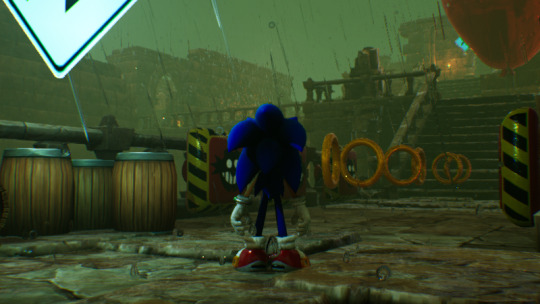
This claims to be a “pack” of multiple levels, but the one level I played went on for over 25 minutes without showing any signs of ending. The level is… well, it’s the kind of stuff we’ve seen at SAGE for years and years and years, a space previously occupied by SonicGDK and BlitzSonic before it, where somebody is clearly starting out learning 3D level design, has some prefab assets, and goes to town creating a huge, intricate environment… that doesn’t fit a Sonic game at all. Too many tight spaces, too much enemy spam, and too much labyrinthine pacing. This is “Sonic Visits Anor Londo,” and while it looks interesting visually, it’s easy to get lost, or worse, killed because something isn’t functioning right. Like a lot of Infinity Engine stuff, it’s a bit hit or miss.... And now, also cramped.
Infinity+ Colorful Combat
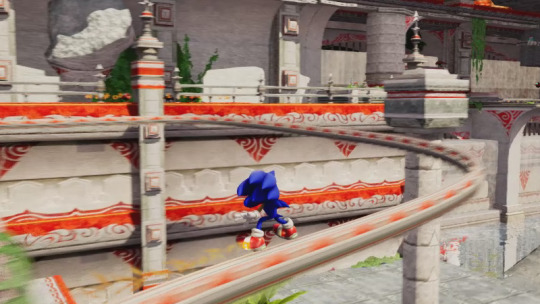
The primary goal of this seems to be to update the Infinity Engine with extra features, something that I think is pretty welcome. The Infinity Engine is okay, but it’s missing a little bit of polish that the original developer neglected to give it before abandoning the project. This helps tighten some of that stuff up, while also introducing Wisp powers and more playable characters. Some of the new characters could still use some work, yet, but given the project is still in active development, that’s pretty much a guarantee. This could end up being the defacto version of the Sonic Infinity Engine.
Sonic Reforge: Red Ridge (Blockout)

This is what’s called a “Grey Box.” Rather than build out a fully-detailed level, you get a rough estimate on how the stage will flow before you put all the graphics in. What’s here is okay, I guess, but the level loops back on itself in ways that can be kind of confusing. There are a few places where it’s not really clear where you’re supposed to go next, and I spent several minutes running in circles. I’m also not a huge fan of the changes to Infinity’s physics; jumping off of ramps is a key part of the Sonic experience, but there are several places here where that doesn’t work -- to get the height needed to progress, you just need to roll really fast. It works, but it doesn’t feel like the Sonic I’m familiar with.
Sonic World DX

I have a bit of history with this game. Or, well, with a different version of this game. I wasn’t kind to some of the original entries at SAGE many years ago, but over time, they’ve cleaned the game up and streamlined it a fair amount. Now we have the “DX” release, a further cleanup effort splintered off from the main project, but to be honest, I’m not entirely sure what’s different from the previous release. The main version of Sonic World supports an absolutely gargantuan amount of content, with 50 playable characters and at least that many levels. It was big, and weird, and impressive. This demo ships with three or four playable characters and eight stages. Beyond that, there’s not much else to say -- it’s still Sonic World, though this release doesn’t work right with my controller. It picks up the controller binds from the main version of Sonic World, correctly assuming I’m using a DualShock 4, but none of the buttons are correct. When it asks me to press the X button, I have to press Circle for it to properly register. Not only that, but the right stick camera control is completely broken. Switching to an Xbox controller fixes the camera issues, but now the face buttons have the opposite problem: when it asks me to press A to jump, I have to press X. Throws my whole vibe off, like wearing your shoes on the wrong feet. The menus are bizarre, too -- while adjusting the volume, you can’t push left or right to adjust the levels, you have to use controller face buttons for some reason. This whole thing feels like I stepped back in time to 2013 in a bad way.
Sonic Freedom
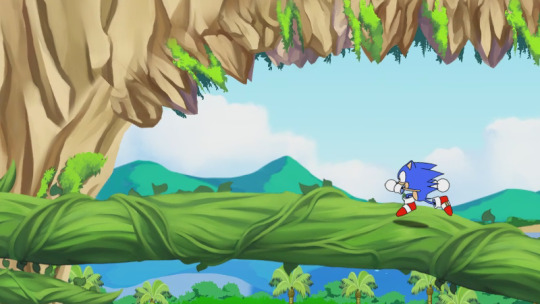
I feel like I’ve been waiting to see a major development from Sonic Freedom for half a decade at this point. The art considerations for this game are no joke, and I do not envy anyone trying to make a proper high-def 2D Sonic game that looks this good. But, well… it’s another year, and there’s not a lot here. It plays fine, I guess -- the controls are decent, at least. The problem is the level design. Does this level even end? I’m not sure. I know previous demos for Sonic Freedom have had more than one level, but the stage you start out in here is a confusing, empty labyrinth with respawning enemies and a finite number of rings. You climb up and up and up, but eventually I reached what felt like a dead end. Visually it will always look incredible, but I’m wondering if it’ll ever actually become a game at any point in the future.
BraSonic 20XX
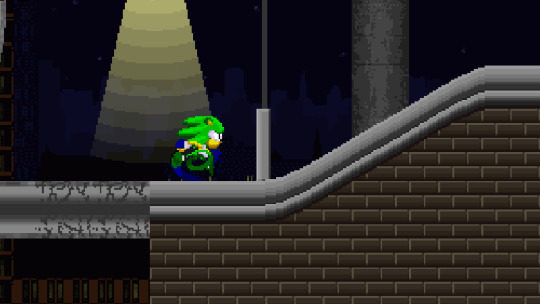
Here’s a strange blast from the past I wasn’t expecting. BraSonic is an old fangame from probably more than a decade and a half ago. It was so long ago that I can’t even actually remember if I played the old version of the game or not, but I definitely remember the name. What really throws me for a loop playing the 20XX version now is how much it feels like a game from back in the early 2000’s. The artwork, the sound effects, the locations, all of it makes me feel like I’m 19 again. Thankfully, this doesn’t play like a fangame from 2004; physics seem pretty solid, level design flows pretty well, and it generally seems to be fun, weird, and most importantly, unique. There aren’t many fan games here at SAGE that open with their first boss fight being against Sonic the Hedgehog. If you find yourself getting burnt out from so many Sonic fan games feeling same-y, this could be a good change of pace.
Sonic Frenzy Adventure
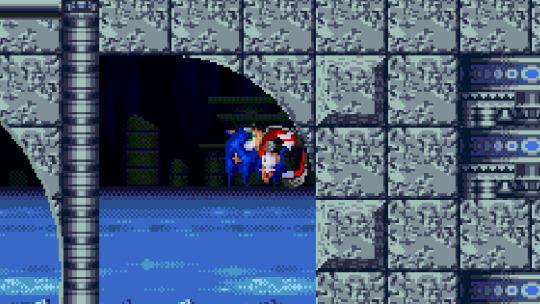
Maybe it’s the fact that this is the 20th Anniversary of the Sonic Amateur Games Expo, but here’s another very old fangame coming back out of the woodwork for an enhanced modern re-release. This game was a mainstay of the mid-to-late 2000’s SAGE events, after which it disappeared before being finished. Well, maybe it was finished. Again, a lot of this stuff was so, so, so long ago that this poor old man’s memory just can’t recall it. Seeing Frenzy Adventure back warms my heart, though. It’s an old friend in what has proven to be a very challenging year. Admittedly, parts of it still feel a bit mid-2000’s, but I consider those charming quirks. Throwbacks to a simpler era. At the very least, controls have been improved, so it does play better than the old releases did. Good stuff. Glad to see you again, dude.
Sonic Speed Course

This was a game that turned up last year, but in the kerfuffle I didn’t get around to trying it, even though I really wanted to. This is clearly a game inspired by Kirby’s Dream Course, but instead of Nintendo’s pink puffball, we have Sonic and friends. Whereas Kirby gained abilities by bowling through enemies, this adapts a more traditional Sonic gameplay structure of item boxes filled with shields and other powerups. But here’s my deep dark secret: even though I love Kirby’s Dream Course in concept, there’s a part of me that feels an intense hatred for that game. I have distinct memories of renting Kirby’s Dream Course as a kid and getting really far into the game, but trying to play it as an adult I’m baffled at how difficult it is. The main problem I have is that every stroke you take subtracts from your health, meaning you can only hit the ball so many times before you just… die. This makes for a very, very steep learning curve that discourages play and experimentation. Every shot truly, deeply matters and eventually I find myself caught in a death spiral and staring at the game over screen. All of this is replicated in Sonic’s Speed Course, which, much like with Kirby, I find myself drawn to like a moth to the flame -- only to come away feeling dejected and like I’m just not good enough. For fans of Kirby’s Dream Course, this is undoubtedly good news, as this means Sonic Speed Course is faithful to the tone of that game. But I find myself wishing there was a practice mode or something that let me play these courses without the punitive health system, because I’m ready to love them.
Sonic: Triple Trouble 16-Bit
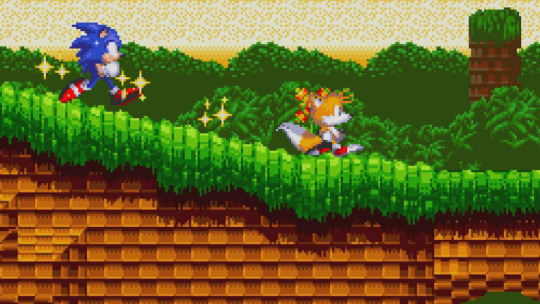
When you write about so many games at SAGE every year, things start to blur together... a lot. I seem to recall that Triple Trouble 16-Bit last year was good, but had room for improvement. Well, this year, this demo feels… really quite good. I’ll admit, I was a little skeptical about remaking this game. Sonic: Triple Trouble was among the first batch of Game Gear games I ever owned as a kid, and while I liked the game, in my adulthood, I feel like I’ve come to appreciate Sonic Chaos more. But so much has been added to this game that it’s really come into its own. It uses Triple Trouble more as a jumping off point to become something fresh and interesting, and on top of that, this demo is pretty polished. This game was kind of always on my radar, but it’s really turning into something special.
Battle Cross Fever
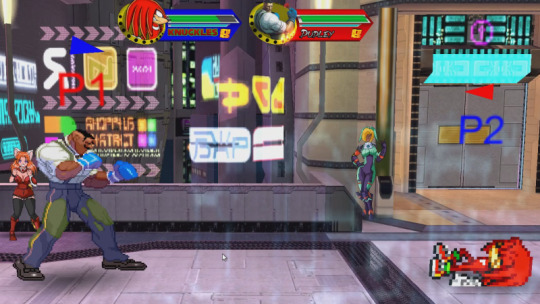
Every year, I download this game hoping for some kind of single player offering, and every year I’m let down. Battle Cross Fever is a fighting game that plays a lot like Smash Bros., but contains elements that pull it closer to traditional fighting games like Street Fighter. It’s the kind of game that can check with the server to make sure you’re playing the latest version, but doesn’t have true online multiplayer -- instead advertising that you should use a piece of screen sharing software like Parsec to accomplish online multiplayer. In their defense, the few times I’ve used Parsec, it’s basically been magic for how well it works. But I just want, like… anything that I can play by myself. Even if it’s just a super basic arcade mode with brain dead AI, anything is better than nothing. But, I suppose, I am an outlier. Judging by the horrific character select music I landed on, Battle Cross Fever has enough of a community that they could get fans to sing along to “Ghost Town” from Sonic Forces -- which is a fun idea, don’t get me wrong, but when you have loud voices over cheap microphones, well… I hope you aren’t wearing headphones like I was. Anyway, this game’s always seemed solid, but I’ve also never played it with another human being, so really, I’m speaking from the perspective of admiring the diverse roster and all of the fun arenas they’ve ported in. Maybe someday it’ll get some single player content.
I’ll be back with another article… uh, eventually. In truth, I was only going to feature five games here, but it ended up being ten, so we’ll see how many are in future articles when we get there!
#writing#SAGE#sonic amateur games expo#review slew#sonic gt#project sxu#sonic infinity engine#sonic world#sonic freedom#brasonic#sonic frenzy adventure#sonic speed course#sonic triple trouble#battle cross fever#review
8 notes
·
View notes